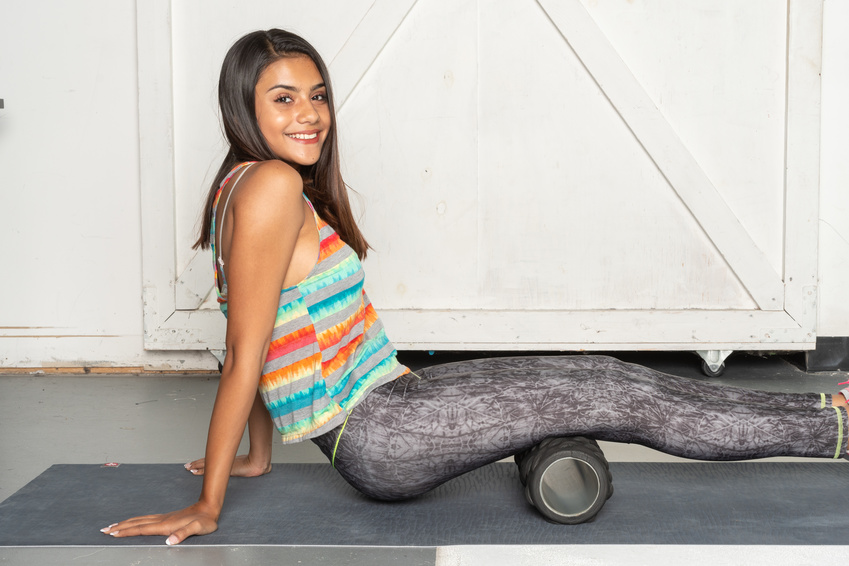Foam rolling is a commonly used tool throughout fitness and sports activities to help improve performance and recovery. Foam rolling is based on myofascial release, which involves stimulating the fascia to help improve neuromuscular activation and decrease tension within muscles that feel “tight”. Fascia is connective tissue that surrounds all of our muscles and helps reduce friction as our muscles contract and also provide sensory feedback. Just like the rest of our body, we need to make sure our fascia is working properly to decrease muscle tightness, improve range of motion, and decrease areas of pain in muscles throughout our body. A way to maintain optimal performance of our fascia is through self-myofascial release.
What is Self-Myofascial Release?
As the title of this article entails, a way to perform self-myofascial release is through foam rolling. Foam rollers are large cylindrical pieces of foam which may vary on the level of firmness from soft to hard. The goal is to apply your own body weight onto the foam roller and target specific muscles that may be feeling sore or tight. With foam rolling, you are in control of how much weight or pressure you want to apply to your muscles depending on your tolerance. While applying your body weight, roll the foam roller back and forth slowly to the muscles you want to target. There are no specific parameters of how long you should foam roll but for those who want specifics, a good rule of thumb is foam rolling specific muscle groups between 30-60 seconds before moving onto the next muscle group. You can definitely roll out muscles groups for longer than 60 seconds but to see a noticeable difference you should at least foam roll for 30 seconds. Ideally, you want to roll out muscles which may be feeling sore or have tender spots to help improve blood flow to that area and decrease the tension within that muscle group and fascia.
The Benefits of Foam Rolling
So you may be asking, what are the benefits of performing foam rolling?
- Improved range of motion
- Reduced soreness
- Decreased muscular tension
- The promotion of blood flow
Research has shown one of the benefits of foam rolling is improving range of motion in our joints. By foam rolling specific muscle groups, you can expect an improvement in your range of motion for the joints for which those muscles affect. Another benefit of foam rolling is reducing the soreness you might feel after performing a challenging workout. A way to decrease the amount of soreness you feel after performing a workout is by foam rolling the muscles you worked out after and also the following days. By foam rolling the muscles you worked out, you will stimulate the fascia surrounding those muscles to decrease tension and also promote blood flow to help improve recovery and decrease the amount of soreness you may be experiencing. Unfortunately, there has been no research indicating foam rolling to improve sport or athletic performance but it has shown to not impair performance. While keeping all of these benefits in mind, foam rolling can be an effective tool to help improve range motion, decrease muscle soreness, and improve recovery after challenging workouts.

